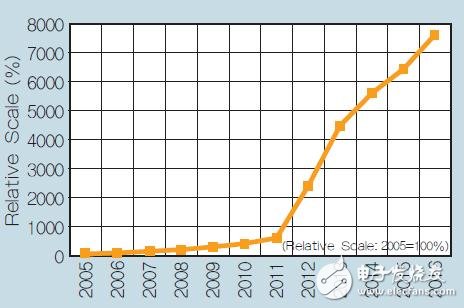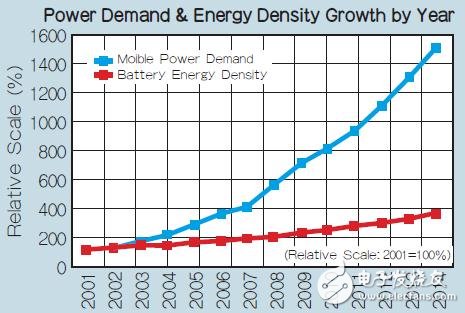Power technology boosts universal mobile healthcare
Universal health care is one of the most important government, social and economic issues in the near future. The focus is on providing medical insurance to uninsured people, which also means providing medical care to people who are remote and underserved. So how do you provide the service? Clearly, the solution lies in technology, specifically smartphones, tablets and biomedical sensors.
So far, there are more than 40,000 medical applications on the market – and that's just the beginning. In 2011, the number of downloads of medical applications reached 124 million, and by 2012 the data almost doubled to 247 million. The compound annual growth rate of health and fitness sensors is expected to exceed 37% (Figure 1).
Figure 1: Worldwide mobile sensor health and fitness sensor shipments (2012~2017).
Applications and biosensors on mobile platforms are now able to monitor sleep, diet, pregnancy, prescription management, mood, blood pressure, blood sugar levels, pollen levels, peak flow, auscultation, heart rhythm, ultrasound diagnosis, skin stress, chemicals and many other aspects . Any number of diagnostic programs can be provided by connecting more advanced instruments to your phone.
However, the acquisition of new mobile medical detection and processing functions comes at a price – power consumption. The core of the mobile phone is an advanced application processor, and its speed and processing power are increasing every year. However, each time the processor is updated, the battery life will be more tested. This problem is particularly acute for battery-powered telemedicine systems running on mobile platforms (Figure 2).

Figure 2: Multi-core, 64-bit bus and process migration drive index processor capabilities.
Being able to take readings for long periods of time is often a key aspect of medical telemetry. Battery life has become an important concern when critical health care is related to battery life. So, can a typical mobile power supply keep up with the processor's improvement? In many cases, it may not be able to keep up (Figure 3).

Figure 3: Demand grows exponentially, but battery energy density increases exponentially.
Although the performance of the battery has been continuously improved, the speed cannot keep up with the processor powered by it. Battery performance (measured in terms of energy density) increases only at a linear rate, which is much slower than the exponential growth rate of processor performance. This creates a power gap that is unpopular for medical applications that require long battery life.
Hidden design
One second stretch, free storage
Strong and durable
Aluminum alloy plug, TPE cover
Ultrasonic welding pressure
Close fitting, firm resistance to fall
Strong and durable
Priority TPE
It's hard to break even if you stretch multiple times
Stretching or shrinking only one end can easily to damage the components and cause jamming
No winding
Stretch when used, shrink when not used
Five lengths
Each pause is a length, suitable for multiple occasions
Notice
Both cables are stretched at the same time
Do not stretch unilaterally
Cable Data,Best Data Cable,Data Cable Charger,Data Transfer Cable
Guangzhou HangDeng Tech Co. Ltd , https://www.hangdengtech.com